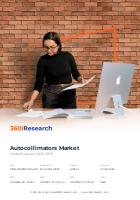
Autocollimators Market by Product (Digital Autocollimators, Visual Autocollimators), Axis Configuration (Dual Axis, Single Axis), Working Distance, Accuracy Range, Technology, End-Use Industry, Application, Distribution Channel - Global Forecast 2025-2030
SKU
MRR-C002B1C9948D
Region
Global
Publication Date
December 2025
Delivery
Immediate
2024
USD 288.78 million
2025
USD 304.31 million
2030
USD 398.71 million
CAGR
5.52%

Download a Free PDF
Get a sneak peek into the valuable insights and in-depth analysis featured in our comprehensive autocollimators market report. Download now to stay ahead in the industry! Need more tailored information? Ketan is here to help you find exactly what you need.



